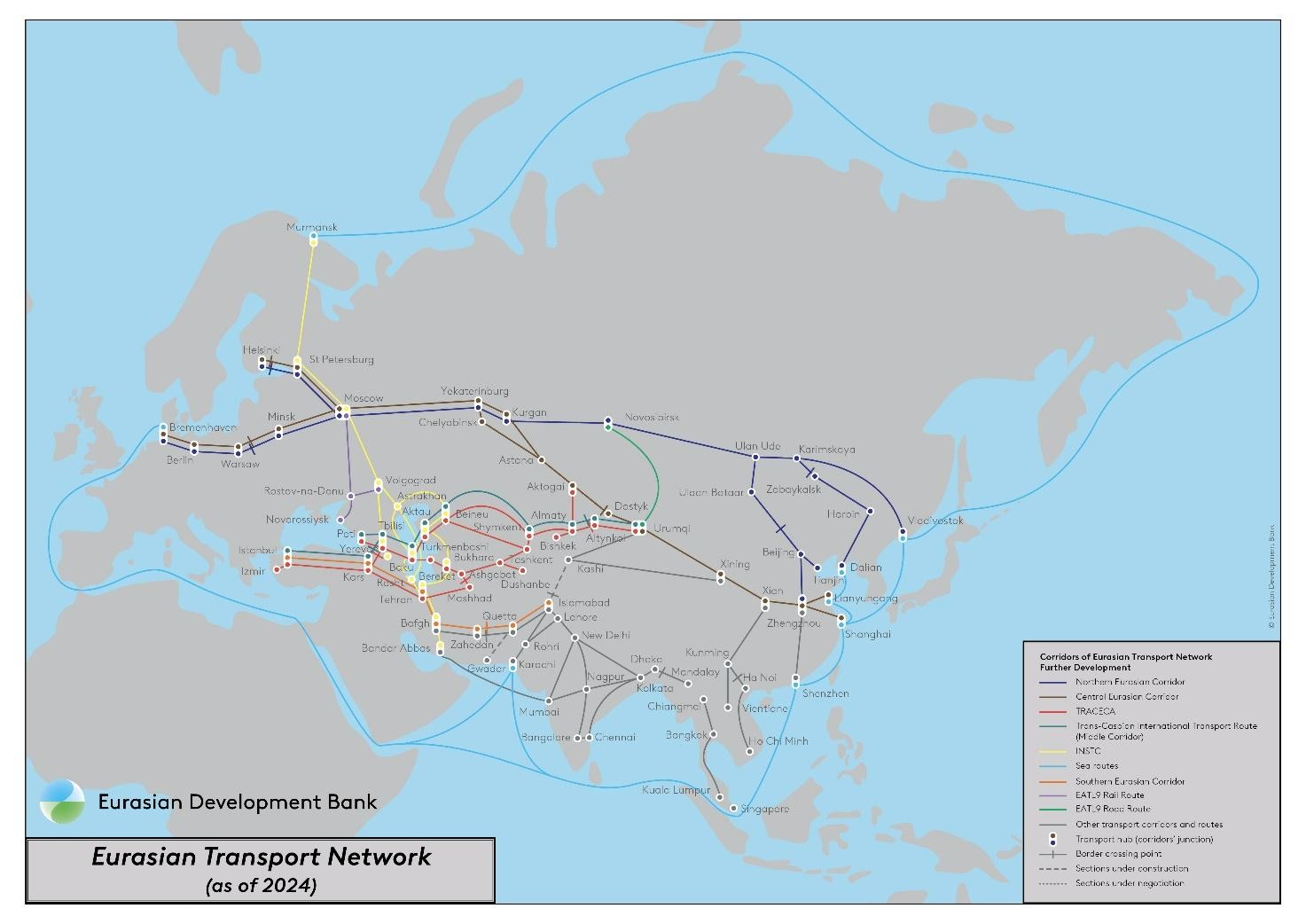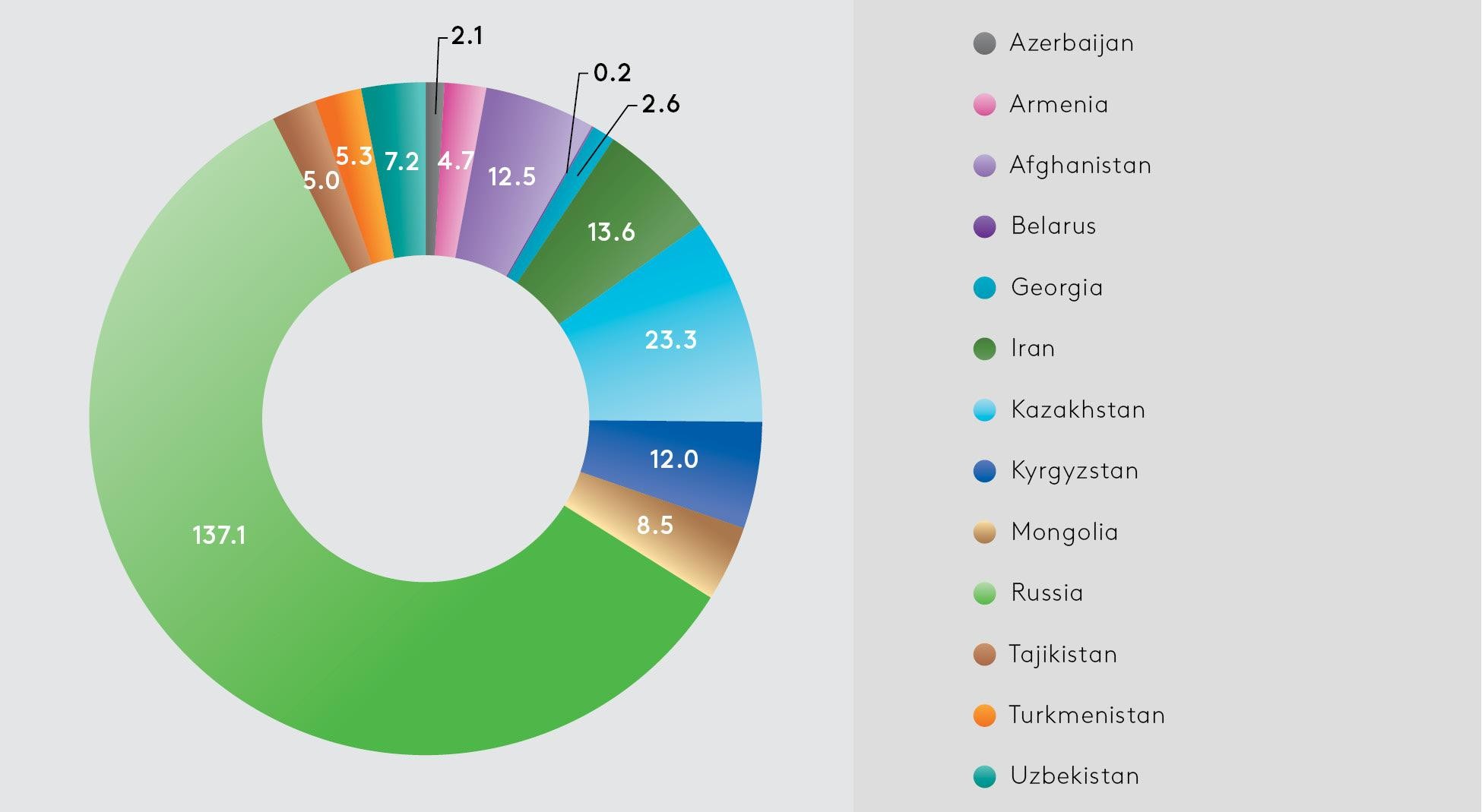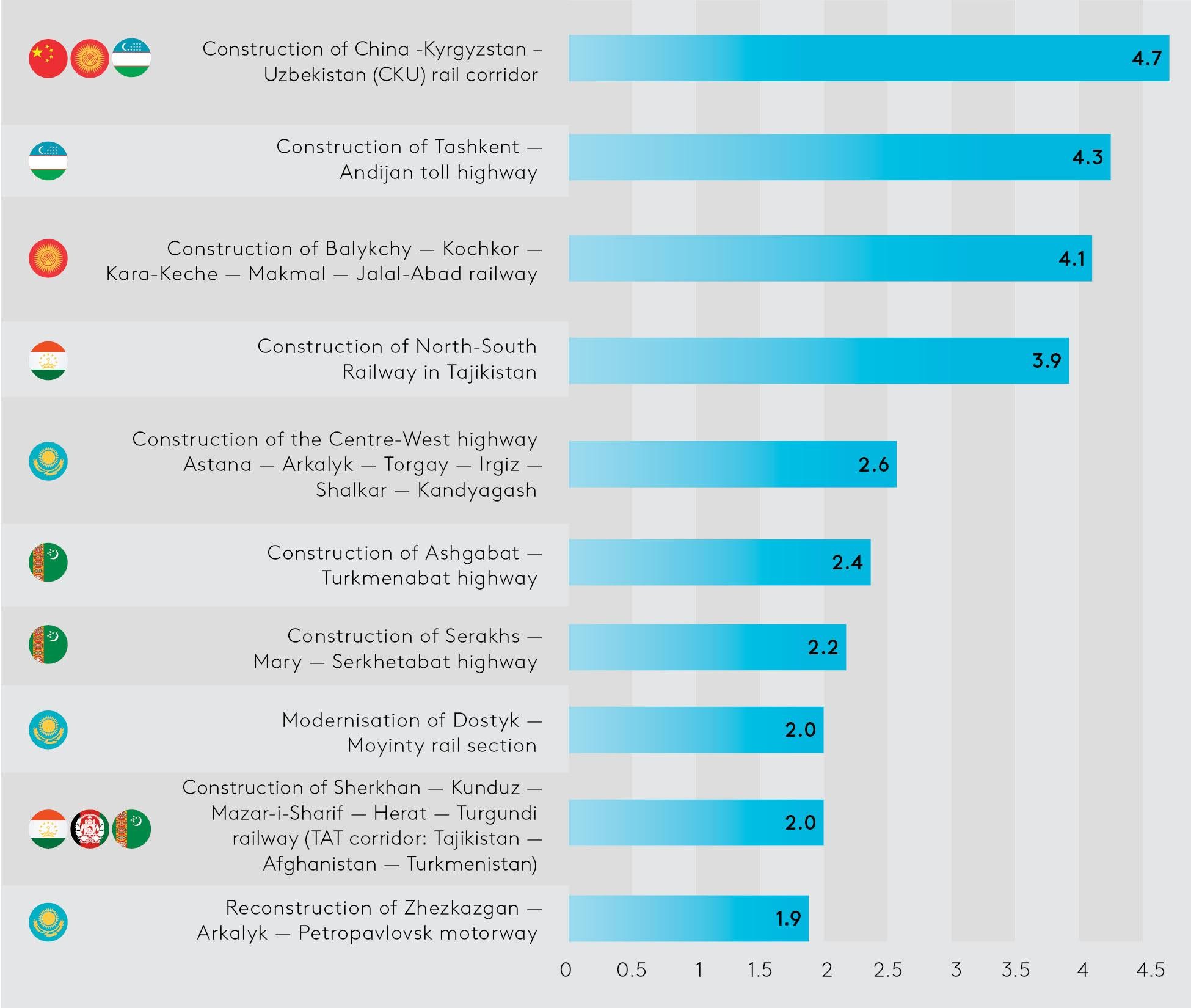The 2035 Eurasian Transport Network: over 300 infrastructure development projects with a total investment of over $234 billion
The EDB presents its Transport Projects Observatory, a tool for monitoring and coordinating the infrastructure development in the course of the implementation of the Eurasian Transport Network unique concept developed by the Bank. The Observatory is a database and an interactive map of transport corridor development projects implemented in 13 Eurasian countries. As of July 1, 2025, it comprises 325 projects with a total investment of more than $234 billion.
Almaty, July 31, 2025. The Eurasian Development Bank (EDB) promotes a network approach to transport connectivity in Eurasia. In accordance with the Eurasian Transport Network concept outlined by the Bank in its Report in 2024, the maximum effects of its development will be achieved through the synergy of transport corridors along the West–East and North–South axes. Development of the Eurasian transport corridors infrastructure is positioned as the main component of the Eurasian Transport Network formation.
Eurasian Transport Network

Source: EDB
To assess progress in infrastructure development, the Bank has established the Eurasian Transport Network Observatory. The Observatory includes a database of projects, as well as a geographic information system of their positioning along the Eurasian transport corridors.
Evgeny Vinokurov, EDB's Deputy Chairman of the Board and Chief Economist, noted: "Eurasian countries need cheaper and more efficient transport links, especially along the North–South axis, which will stimulate trade with the countries of South Asia and the Persian Gulf. The Eurasian Transport Network Observatory is a convenient analytical tool for assessing investment needs and plans to increase transport connectivity in Eurasia. It allows not only to monitor the transport-related activity in the covered area, but also to help coordinate the efforts of the participating countries and international financial institutions to implement projects vital for the entire region."
The Observatory covers 13 countries, including Azerbaijan, Armenia, Afghanistan, Belarus, Georgia, Iran, Kazakhstan, Kyrgyzstan, Mongolia, Russia, Tajikistan, Turkmenistan and Uzbekistan. The project data is based on open information sources that include national and international transport development programs, press releases, expert assessments, and other publicly available information.
The Observatory provides information about the projects names and description, the country of implementation, the transport corridor, the type of transport, as well as the volume of investments distributed by sources of financing, timing, current status of implementation, the PPP presence, etc.
As of July 1, 2025, the Observatory database encompasses 325 Eurasian Transport Network development projects, both already underway and planned, with a total investment of $234 billion.
The majority of projects – over 51% – are being (or planned to be) implemented in the road sector. Country-wise, Russia accounts for 7 of the 10 largest projects aimed at the Eurasian Transport Network development. Thus, the development of the Northern Eurasian Corridor is the most capital-intensive. It requires $78 billion of investment, which accounts for more than a third of the capital expenditures for the development of the entire Eurasian Transport Network.
Distribution of investments for the development of the Eurasian Transport Network across Eurasian countries, $ bln.

Source: calculations by EDB analysts
Investment-wise, more than 60% of the total number of projects are under implementation. Project documentation is being prepared for 13% of projects, and 27% are currently under discussion or at the planning stage.
The Central Asian countries account for more than 22% of the investments directed to the development of the Eurasian Transport Network. 90 projects totalling about $53 billion are being – or planned to be – implemented. About 44% of them are projects implemented in Kazakhstan.
Almost two thirds of investments in Central Asia are directed towards the development of a network of main roads, which indicates a high demand for high-quality road infrastructure that will facilitate trade and international transportation in the region.
The 10 largest projects account for 58% of the total investments in the development of the Eurasian Transport Network in Central Asia. Among them are large–scale projects for the construction of the China–Kyrgyzstan–Uzbekistan railway, the Tashkent–Andijan highway in Uzbekistan, the Centre–West expressway in Kazakhstan, the Ashgabat–Turkmenabat and Serakhs–Mary-Serkhetabat highways in Turkmenistan, etc.
Top 10 projects aimed at the Eurasian Transport Network development in Central Asia, $ bln.

Source: calculations by EDB analysts
Prioritization of projects gains importance given the limited investment opportunities. In five countries of the Eurasian region – Afghanistan, Tajikistan, Kyrgyzstan, Mongolia and Armenia – the total costs allocated for the transport corridors development are very significant not only in terms of monetary value, but also in relation to the size of these states' GDP.
In this regard, international development banks and other development institutions can provide technical assistance in the selection and financing of priority projects, especially in landlocked or mountainous countries and other countries with specific development conditions.
In total, 113 of the 325 projects aimed at the development of the Eurasian Transport Network involve participation of private businesses (almost half of these projects are implemented in the field of logistics and warehouses). 17 projects are being (or may be) implemented based on PPP principles, including at least two projects based on the principles of cross-border PPP (the China-Kyrgyzstan-Uzbekistan and the Trans-Afghan railway corridors).
Increasing the number of projects attractive to international development banks and private investors, including those based on PPP principles, is becoming an important area of transport planning and the development of cooperation between the countries of the region in the transport sector.
The interactive map of projects is available here.
More information about the contents of "The Eurasian Transport Network: An Observatory of Projects and an Interactive Map" working paper can be found on the Bank's website. In addition to the working paper, the website contains a presentation, as well as a link to a web page with an interactive map of the Eurasian Transport Network corridors and the ongoing investment projects aimed at the ETN development.
Additional Information:
The Eurasian Development Bank (EDB) is a multilateral development bank investing in Eurasia. For more than 19 years, the Bank has worked to strengthen and expand economic ties and foster comprehensive development in its member countries. By 2025, the EDB’s cumulative portfolio comprised 305 projects with a total investment of US $16.5 billion. The Bank's portfolio consists principally of projects with an integration effect in transport infrastructure, digital systems, green energy, agriculture, manufacturing, and mechanical engineering. The Bank’s operations are guided by the UN Sustainable Development Goals and ESG principles.
As part of its 2022–2026 Strategy, the EDB is implementing 3 mega-projects: The Water and Energy Complex of Central Asia, The Eurasian Transport Network, and The Eurasian Commodity Distribution Network.
The EDB Media Centre:
+7 (727) 244 40 44, ext. 4774, 2160, 3730
